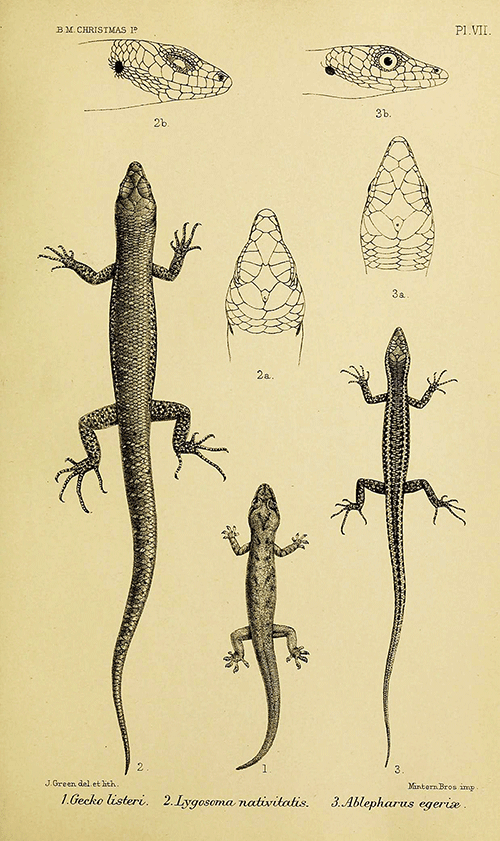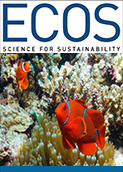
|
Published: 25 November 2014
Can Christmas Island’s remaining reptiles evade the invaders?
Five of Christmas Island’s six native reptiles are regarded as being threatened with extinction. Now, Australian researchers are investigating how the last species remaining in the wild – the Christmas Island giant gecko – might evade the same fate.

|
|
Early drawings of three of Christmas Island’s native reptile species – will they be relegated to history? Credit:
Flickr/Biodiversity Heritage Library CC BY 2.0
|
The evidence the researchers gather will be used to protect the giant geckos as well as the critically endangered blue-tailed skinks and Lister’s geckos from feral cats, rats, yellow crazy ants, wolf snakes and centipedes, says lead researcher Ms Melissa Wynn of the National Environmental Research Program’s Environmental Decisions Hub (NERP’s EDH) and The Australian National University (ANU).
‘Four species of mammals appear to have perished since human settlement, and the island has had a catastrophic decline in reptile numbers,’ says Ms Wynn. ‘The forest skink, blind-snake and coastal skink may already be extinct, and the Lister’s gecko and blue-tailed skink are now in captive breeding programs.
‘The giant gecko – the sixth species – was also thought to have declined by 30 per cent up to 2008 according to earlier surveys. Taken together, the island presents one of the largest reptile extinction problems that Australia has ever faced.’
While the exact cause of the decline is unknown, park managers and other experts, including the Christmas Island Reptile Advisory Panel, suspect it has been largely caused by invasive species, with the Indian wolf snake and the giant centipede as major culprits.
‘While there’s some great work on Christmas Island to control yellow crazy ants and feral cats, there’s currently no eradication strategy for the Indian wolf snake and giant centipede – invasive predators which mainly prey on small reptiles,’ says Ms Wynn.
Working with Christmas Island National Park (CINP), NERP EDH researchers are currently identifying all potential threats to the native reptiles as well as how the giant geckos avoid predators.
‘Christmas Island National Park is running captive breeding programs for Lister’s geckos and blue-tailed skinks, and their populations are starting to recover in captivity on the island and in Sydney’s Taronga Zoo,’ says Ms Wynn.
‘But before we reintroduce them into the wild, we need to know exactly what the threats are and how to control them. Also, if we can determine how the gecko survives – whether it’s their size, their habitats or other reasons – we hope to be able to prevent them from becoming extinct.’
The scientists will monitor giant geckos, Indian wolf snakes and giant centipedes on the island, determining numbers and habitats of each species, how populations overlap and whether different species are more active in different seasons.
In areas where the predators live near the giant geckos, the scientists will also examine the stomach contents of the invasive animals to determine if they’re preying on the natives.
The next step is to develop effective traps and baits for key predators, and further trial the use of predator-proof enclosures to help inform the future reintroductions of captive bred species.
Source: NERP



